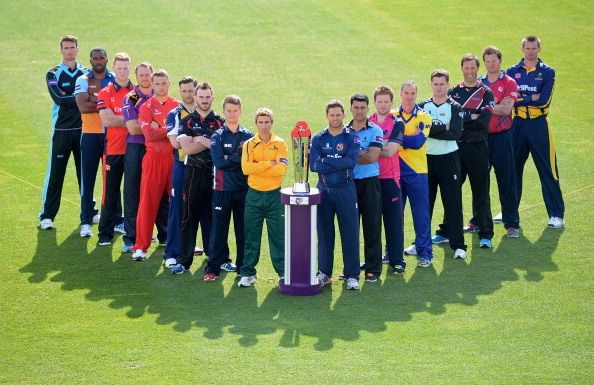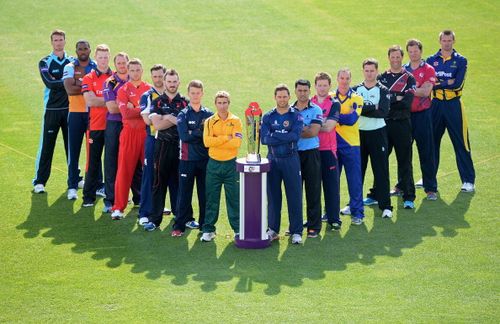
The need for standardised cricket ground dimensions - Make it even and make it fair

“I always felt cricket was special, because of its gladiatorial nature. Much as I love the team framework of the game, I also love the one to one, the face-off, the head to head of Dennis Lillee trying to knock my block off, and I used to try and knock Alan Border’s block off and do the same to him.
I love it that Viv Richards took on the world as if he were fighting for his life in the Coliseum and I love it that any emperor in the history of the Roman Empire would have held his thumb horizontal, waiting till the crowd went quiet, and then slowly raise it skywards to the roar of all the people who came to see Viv play.
If any one man personified all that I believe is good about cricket, it is Viv – strength of body, mind and character, a bright personality, a unique talent, brilliantly applied to a successful career and, best of all, an honorable way of playing the game, respecting it dearly, treating his opponents as he would want to be treated himself.”
- Sir Ian Botham, MCC Spirit of Cricket Cowdrey Lecture 2014
Cricket – a multifaceted sport
Cricket is such a multifaceted sport that it gives different people across the globe different reasons to love it.
The "traditional-followers" of the game love cricket for it being a gentleman’s game. The thrill of watching the drama unfold on the fifth day of an engrossing Test is the best adrenaline rush for some fans.The prospect of a win on the dying embers of a fifth-day pitch is one that everyone looks forward to.The vast legacy of the purest format of the game is something that any cricket fan can be proud of.
For kids of my generation growing up in the 90s, it was all about following the One Day International (ODI) version of the game. Running back to home from school to the sight of Sachin Tendulkar on-driving the best bowlers of the world is a quintessential memory for all the kids of my age.
And now with the advent of the T20 format and its box-office success, we get to experience cricket at an express pace. In a manner of speaking, T20 is like the "Theatre of Cricket". It has all the glitz and glam of the game. The pyrotechnics, the loud music, and the cheerleaders have all been incorporated to rope in the audience to live the three-hour thrilling experience of the slam-bang version. T20 cricket seems to be the preferred format by the crowd. It is the format to be introduced in the newer countries to help popularise the game and make it global.
What makes the game unique
With all the above points being made, the reason I find the game of cricket so unique is because of its geographical aspect. For example, a cricket game played at the WACA, Perth, will be so different from the one played at Eden Gardens, Kolkata. Even with the same set of players, technicians and coaching staff involved, the venue is such a contributing factor to the outcome of the game.
Every time a cricket team travels overseas, the players have to make many adjustments to their game according to the surface they will be playing on. The vast grounds of Australia, the dustbowls of India, the swinging atmosphere in England, the fast and bouncy pitches of South Africa are some of the examples that spring to mind right away. The ability to adjust to the varying demands is truly the litmus test of any cricketer.
Standardising cricket grounds

However, I still feel that there has to be some set standards for the game. The one I advocate most strongly is standardising the dimensions of cricket grounds. Whether you want to keep the boundary size at 60 meters or 75 meters is, of course, up for debate. It can also be argued that one would want to keep different boundary sizes for the different versions of the game. It has become a common sight to see boundaries being pulled in for a T20 game.
I feel it to be a great disparity when even a mis-hit sails over the ropes for a six on Indian grounds and at the same time a well-timed shot can still result in a fielder gulping the ball with certain ease at the boundary on Australian grounds. Most games have pre-defined fielding standards, and cricket could certainly learn from it.
The sight of batsmen running a four on sub-continental pitches is a rarity. Even 3s are hard to come by on Indian grounds. Sunil Gavaskar has said that the boundary he enjoys the most is the one where the ball travels at an agonising pace and the fielder doesn't have the option to give up the chase.
This situation can only occur in Australia where even if a fielder manages to keep the ball within the boundary, the batsmen can still run a comfortable four. On sub-continental pitches, the batsmen are even lethargic to run a brisk three; with the shorter grounds, they prefer to conserve their energy for the big hits.The new breed of spinners are afraid to flight the ball and instead prefer to just dart it in fear that even a mistimed one can damage their figures.
It has also become a common sight to see batsmen just looking to play out bowlers from one end and go absolutely berserk on the bowlers from the opposite end because of the shorter/irregular boundary sizes. Mostly, it results in batsmen getting down on one knee and slogging good deliveries for boundaries. This greatly dents a bowler's self-confidence, which, in turn, has an effect on the team too.
Also, standardising the boundary size is very much under human control. It will bring a uniformity to the game. It will enable us to equally appreciate a six, irrespective of the venue. No bowler will be able to get away easily by citing the smaller boundaries as the reason for his bowling figures. It will also give us a common tool to measure the hitting ability of all batsmen.
The nature of the pitch, the speed of the outfields and the weather conditions at the venue are things that either make sense in being unique or impossible to regulate.
Let us hope that this thought reaches the various governing bodies of cricket worldwide, and we could come to a common consensus about standardised cricket ground dimensions.